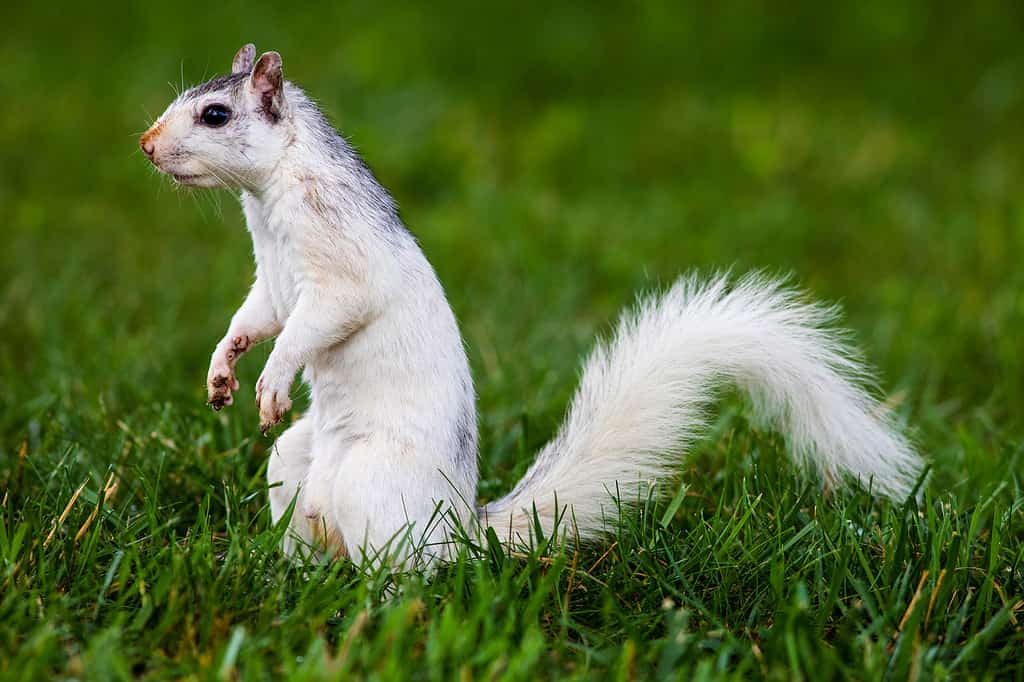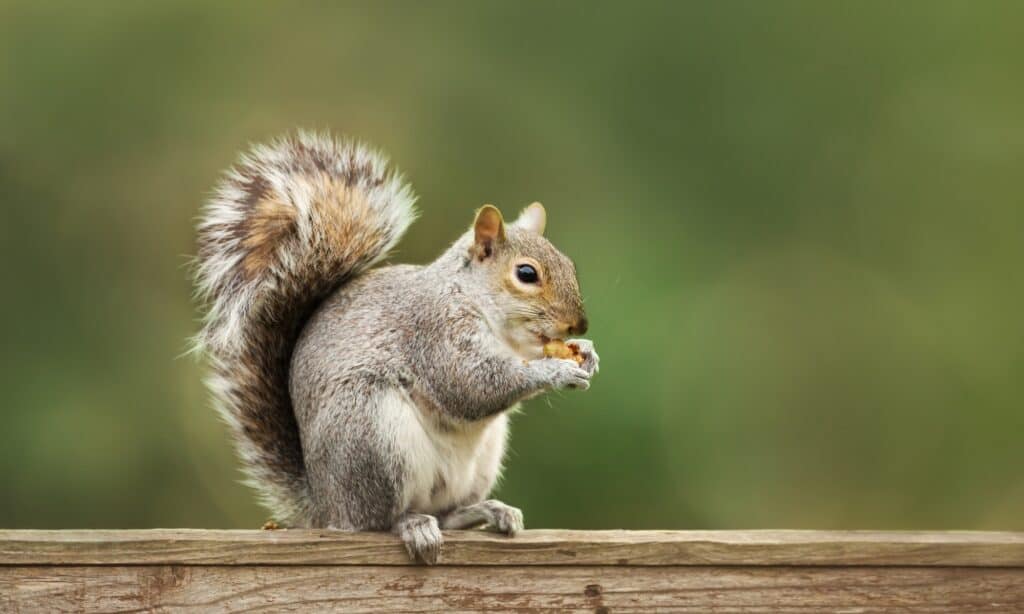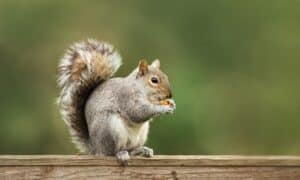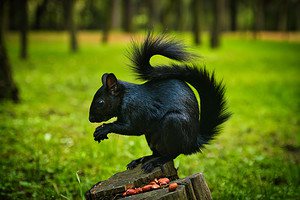More than 280 species of squirrels exist around the world, and they’re smarter than you might imagine. Squirrel behavior involves a lot of use of chatters and tail movements to express their feelings.
Have you been on your deck or patio and watched a squirrel cautiously approach? As it nears your bird feeders, berry bushes, or vegetable garden, the squirrel stands up as tall as possible, performs a tail flick, and starts chattering. Why do squirrels flick and twitch their tails?
What Squirrel Body Language Means

Squirrels stand tall and extend their tail to appear larger when predators approach.
©Sasha Craig/Shutterstock.com
Researchers at the University of California, Berkeley researched squirrel communications, specifically looking at how squirrels flick and twitch their tails. The researchers likened the behavior to humans kicking vending machines when the machine doesn’t dispense beverages or food items. It’s a clear expression of frustration and annoyance.
If a squirrel carries an acorn up a tree and drops it, a tail flick shows frustration. Have you ever watched a squirrel trying to successfully get an entire apple or larger food item to its nest at the top of a tree? If so, you’ve seen a lot of tail flicks and twitches taking place. It’s a challenging task and one that proves extremely frustrating to a small squirrel.
Squirrels use their tails and body language to ward off animals that hunt them. In desert regions, snakes hunt squirrels, but a loud chatter is useless as snakes don’t hear. Standing tall and flicking their tails back and forth makes them appear larger, and by kicking dirt and rocks into a snake’s face, squirrels gain ample protection from snake attacks.
Snappy, quick flips alert other squirrels to threats, such as if a fox, coyote, dog, cat, or other potential squirrel predator approaches. Squirrels use quick flicks and twitches in warning, and the goal of these movements is to keep other squirrels safe.
While squirrels’ tails communicate their feelings, they also use vocal alerts for expression. Squirrel chatters and chirps provide additional messages to the squirrel community.
Why Does It Chatter and Make Noise?
Squirrels produce several types of calls during a normal day.
- Assert dominance: It’s useful in driving away the competition from food, mates, or territory.
- Draws potential mates: As mammals, squirrels reproduce with a partner, and the right call draws the opposite sex to them.
- Express pain and discomfort: Squirrels use vocal sounds to express pain and discomfort. If a hawk attacks a squirrel, the squirrel cries out in pain, as anyone would do in a similar situation.
- Maintain social connection: Just as a human would say hi to a neighbor, squirrels use chatters to communicate with their group, make sure others are around, and connect with children or partners.
- Sounds an alarm: Squirrels call out if a predator or threat is nearby. If a squirrel is chattering as a dog approaches, it’s alerting other squirrels to use caution or hide.
What Does It Mean When a Squirrel Stares at You and Moves Its Tail?

Squirrels rarely attack, but hand-feeding a wild squirrel treats leads to dependency on humans.
©iStock.com/Dgwildlife
Sometimes, a curious squirrel approaches and stares at you. If people feed squirrels by hand, squirrels become accustomed to these interactions and free treats. They do not show fear and approach others for food. It’s cute, but it’s behavior that leads to dependence as squirrels need to forage for the winter’s food stores.
Squirrel attacks are uncommon, but they do happen. Typically, a squirrel attacks to protect her babies or because the squirrel is sick or injured. Any animal experiencing extreme pain or discomfort becomes unpredictable.
Pay attention to a squirrel’s tail. Flicking and twitching indicate annoyance, frustration, or stress. It’s best to back off and remember squirrels are wild animals.
The photo featured at the top of this post is © Koen Adriaenssen/Shutterstock.com
Thank you for reading! Have some feedback for us? Contact the AZ Animals editorial team.







